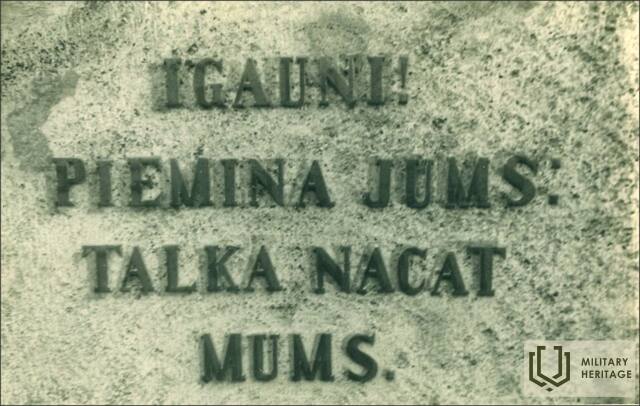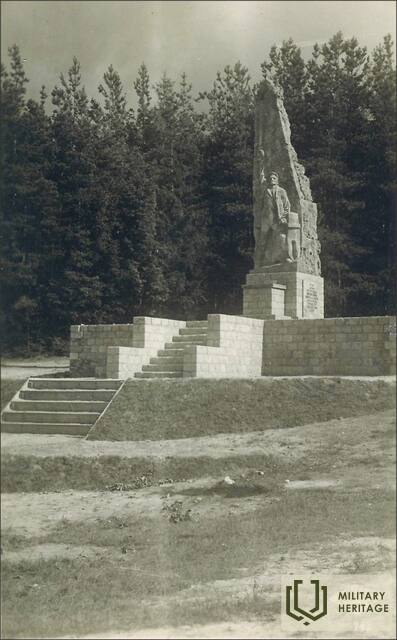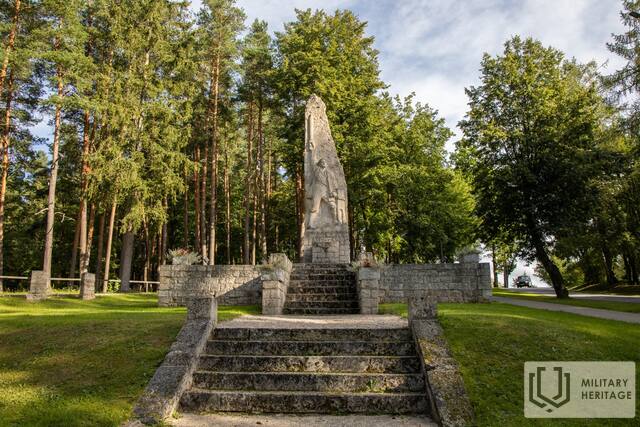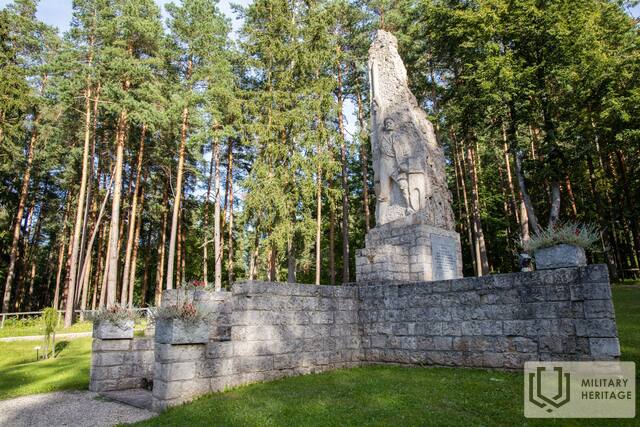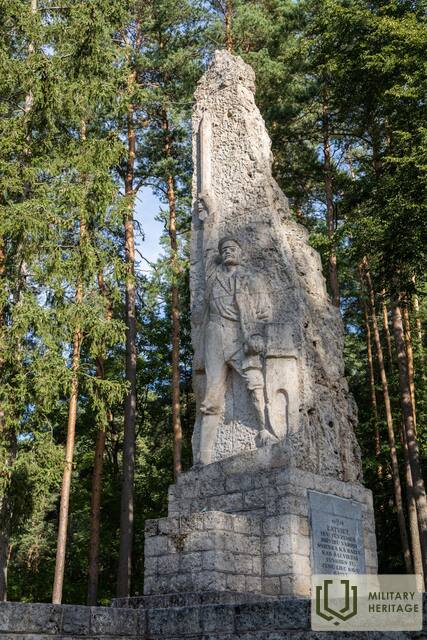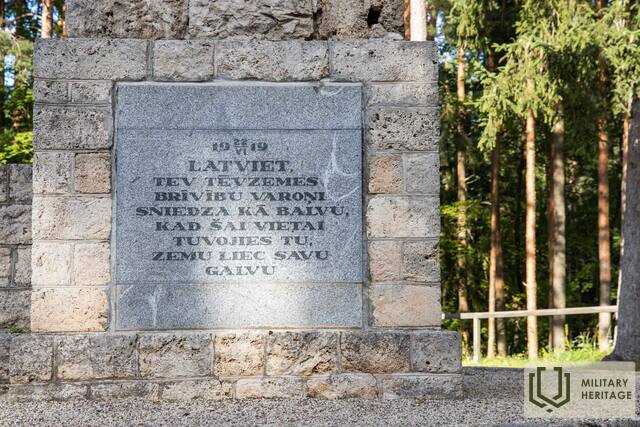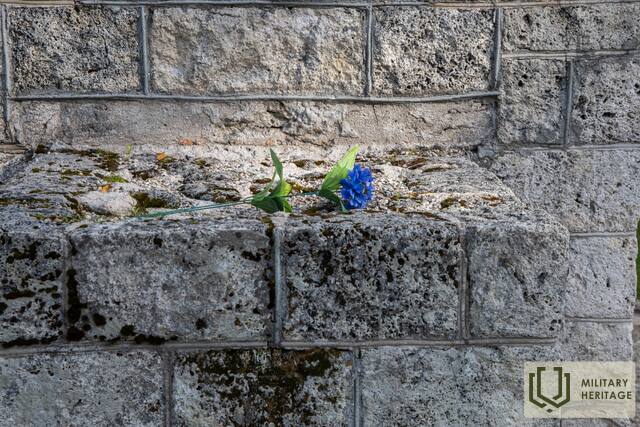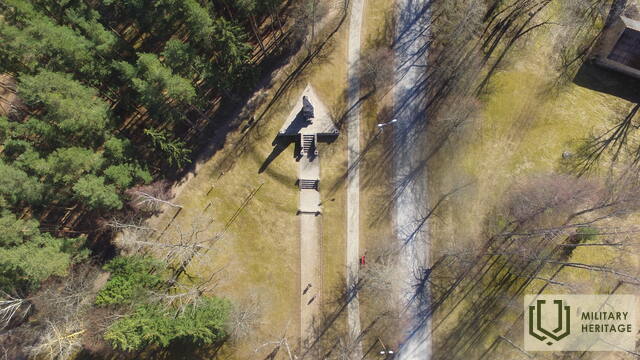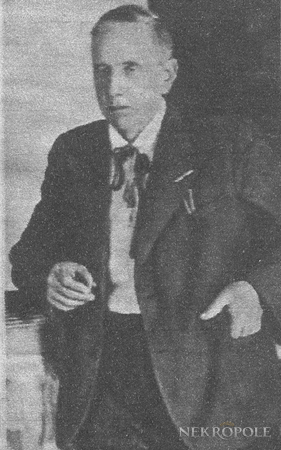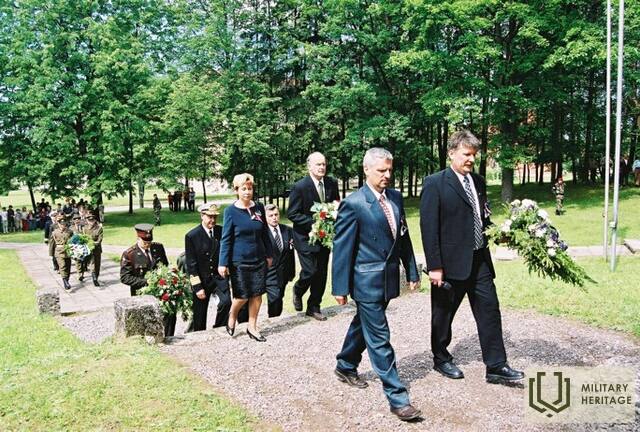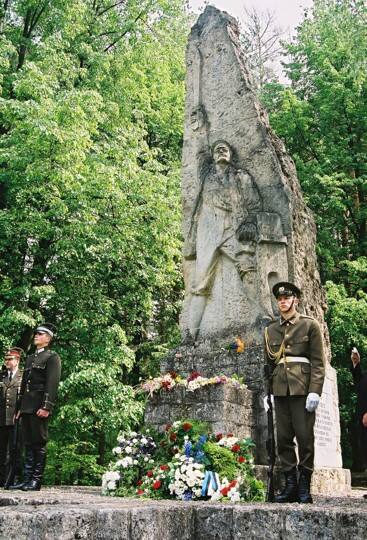Mälestusmärk Võnnu lahingus langenuile Mälestusmärk
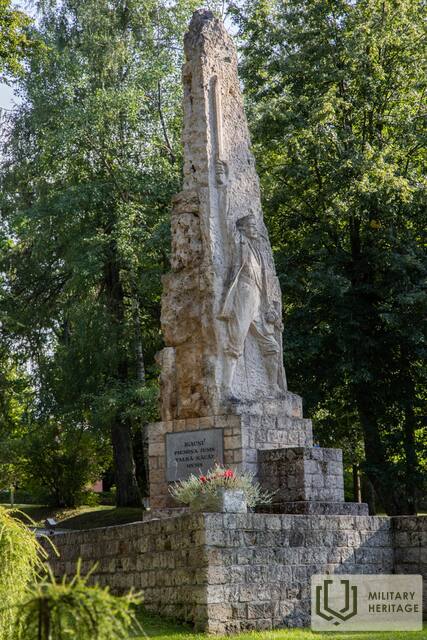

Mälestusmärk Võnnu lahingus langenud eesti ja läti sõduritele asub Priekuļi piirkonnas Liepas Rūpniecībase tänava lõpus, umbes 1 km Lode raudteejaamast lõuna poole. Mälestusmärgile pandi nurgakivi 22. septembril 1929 ja see avati 11. augustil 1935. See on valmistatud Allaži allikalubjast Liepa vallas Julla talus elanud skulptori Augusts Julla kavandi järgi: see kujutab kõrgreljeefina ühe käega adrale toetuvat talupojast sõdurit, kelle teises käes on ülestõstetud mõõk. Sõduri näo loomiseks kasutati skulptori isa Jānis Julla surimaski. Liepa valla ajaloo uurija Aivars Vilnis on märganud, et linnulennult on näha, et mälestusmärgi vundament, selle juurde viiv tee ja trepp moodustavad noole kuju, mis on suunatud Liepa mõisa (Lindenhoffi) poole, kus paiknesid Võnnu lahingus sakslaste positsioonid. On muidugi kaheldav, kas see oli tõesti autori omaaegne kavatsus, kuid kindlasti rikastab see mälestusmärgi tänast tõlgendust. Mälestusmärgi kõrval asuvad Läti ainsad looduslikud liivakivikaared, mida nimetatakse Suureks Põrguks (Lielā Ellīte), Liepa Põrguks (Liepas Ellīte) ja Kuradi Ahjuks (Velna ceplis).
Kasutatud allikad ja viited:
Lisamanis, J. 1915-1920. Lahingute ja langenud sõdurite mälestuseks: Esimese maailmasõja ja Läti vabadusvõitluse mälestuspaigad. Riia: NIMS, 1999
https://karavirukapi.blogspot.com/2019/07/liepa-piemineklis-cesu-kauju-atcerei.html
https://timenote.info/lv/Augusts-Julla
http://turisms.cesis.lv/ko-redzet/dabas-objekti/liela-ellite/
Seotud ajajoon
Seotud teemad
Seotud lood
Cēsise lahingute algus, käik ja lõpp
Võit Cēsise lahingutes pidi saama pöördepunktiks lätlaste ja eestlaste võitluses oma riigi iseseisvuse eest. See võit ületas piiri Andriev Niedra valitsuse ja Saksa kindrali Riediger von der Goltzi Baltikumi vallutamise plaanide vahel. Selle asemel alustas tegevust Liepājas Kārlis Ulmanise Ajutine Valitsus.





